Tag: our environment class 10 cbse notes
Notes of Our Environment Class 10: NCERT Science Chapter 13
Notes of Our Environment Class 10: The environment encompasses the habitat in which an organism flourishes, encompassing living and non-living elements such as physical, chemical, and biotic factors. In this chapter, we delve into the diverse components of the environment, explore their intricate interconnections, and gain insights into how human activities impact this delicate ecosystem.
Notes of Our Environment Class 10: NCERT Science Chapter 13

Notes of Our Environment Class 10: NCERT Science Chapter 13
Ecosystem
An ecosystem encompasses the dynamic interplay of both biotic and abiotic factors within a specific area. Biotic elements encompass all living organisms like plants, animals, microorganisms, and humans. On the other hand, abiotic components include sunlight, temperature, air, wind, rainfall, soil, minerals, and more. Examples of ecosystems include pond ecosystems, grassland ecosystems, and various others where these components interact harmoniously.
Mode of Nutrition in Animals and Plants
Living organisms exhibit two primary modes of nutrition: Autotrophic and Heterotrophic. Autotrophic organisms, such as plants and certain bacteria, can produce their own food through photosynthesis. On the other hand, Heterotrophic organisms, including animals, fungi, and some bacteria, rely on consuming other organisms for their nutritional needs.
Saprophytes and Decomposers
These factors play vital roles in the ecosystem’s nutrient cycling. Saprophytes, like fungi and microorganisms, feed on dead and decaying materials, absorbing nutrients from decomposing plant and animal matter. Decomposers, such as bacteria, worms, slugs, and snails, break down organic matter and waste, releasing nutrients back into the soil. Their work is crucial for soil biology as they transform complex organic substances into simpler compounds that plants can utilize for various metabolic activities.
Biotic Components
The living entities within the environment encompass a diverse range of organisms, including plants, animals, microbes, and fungi.
Abiotic Components
The Abiotic Components of the environment comprise non-living chemical and physical elements, including soil, air, water, temperature, and others. These abiotic factors play a significant role in shaping the ecosystem and influencing the distribution and behavior of living organisms within it.
Trophic Levels
The term “trophic levels” pertains to the different stages in a food web, delineated by the flow of energy. These trophic levels are as follows:
1. Producers (T1): Organisms capable of synthesizing their own food, usually through photosynthesis, forming the foundation of the food chain.
2. Primary consumers (herbivores – T2): The organisms that directly feed on the producers, consuming plant material as their source of energy.
3. Secondary consumers (primary carnivores – T2): These are the carnivores that feed on the primary consumers, acquiring energy by consuming herbivorous animals.
4. Tertiary consumers (secondary carnivores – T3): Carnivores that occupy the third trophic level, preying on other carnivores to obtain their energy.
5. Quaternary consumers (tertiary carnivores – T4): Carnivores situated at the fourth trophic level, consuming other tertiary carnivores.
6. Decomposers: Organisms that break down organic matter and detritus, returning nutrients to the environment, and playing a crucial role in nutrient recycling.
Pyramid of Trophic Levels of Our Environment in Class 10
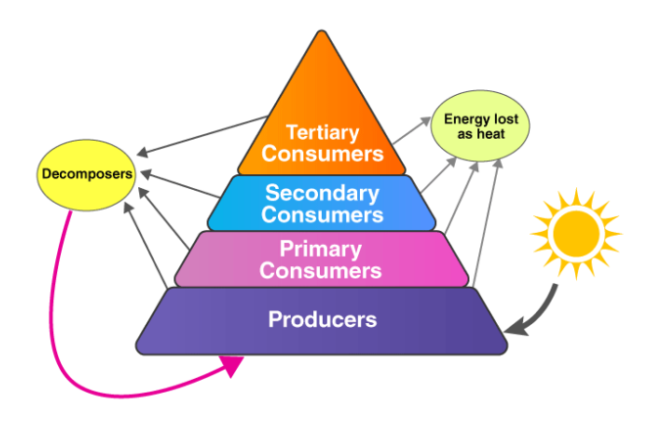
A graphical representation in ecology portrays the organization of trophic levels and can take the form of three types:
1. Pyramid of numbers: This depicts the number of organisms present at each trophic level, starting with producers. It can appear either upright or inverted, depending on the population distribution across trophic levels.
2. Pyramid of biomass: Here, the biomass of each trophic level is illustrated, with producers at the base. Similar to the pyramid of numbers, it can be either upright or inverted, reflecting variations in biomass distribution.
3. Pyramid of energy: This representation is always upright as it showcases the flow of energy from one trophic level to the next. Producers form the foundation, and the energy decreases as it moves up the pyramid to higher trophic levels.
Each type of pyramid provides valuable insights into the ecosystem’s structure and energy dynamics, contributing to a comprehensive understanding of its functioning.
Law of Conservation of Energy
The principle of energy conservation states that energy cannot be created nor destroyed; instead, it undergoes transformation from one form to another.
In biological systems, this energy flows from one organism to another, transferring across trophic levels in the food chain.
Energy Flow
The transfer of energy from one trophic level to another is depicted by the pyramid of energy, illustrating both its direction and amount.
In any given food chain, only approximately 10% of the energy is passed on from one trophic level to the next.
Food Chain
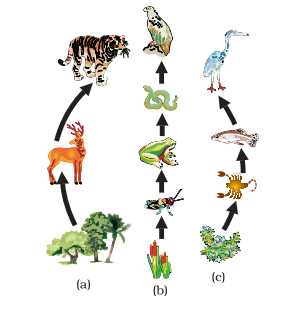
A food chain is the sequence of events within an ecosystem where one living organism consumes another, and subsequently, that organism becomes prey to a larger organism. This process of nutrient and energy transfer from one organism to another at various trophic levels creates the food chain.
Furthermore, the food chain illuminates the feeding patterns and relationships among living organisms. Trophic levels represent the distinct stages in a food chain, beginning with producers at the base, followed by primary, secondary, and tertiary consumers. Each level in the food chain is referred to as a trophic level.
Food Web
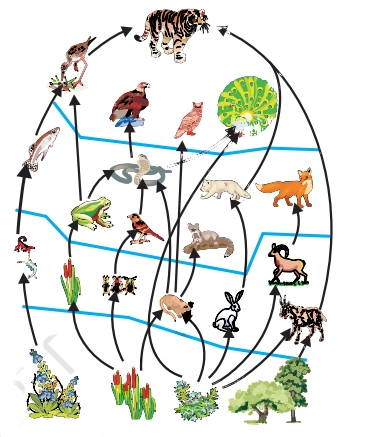
A food web is a complex network formed by several interconnected food chains. While it shares similarities with a food chain, a food web is notably larger in scope. In a food web, some organisms are either consumed by multiple predators or consume several other organisms themselves, leading to a multitude of interconnections between trophic levels.
This interconnectedness is where the food chain falls short in accurately showcasing the flow of energy. In contrast, the food web excels in representing the proper flow of energy by illustrating the intricate interactions between various organisms within the ecosystem. The food web provides a more comprehensive and realistic portrayal of the complex relationships and energy transfers that occur within a given ecosystem.
What is Environment? – Notes for Class 10 Students
The environment encompasses everything surrounding us, comprising both living and non-living elements, such as soil, water, animals, and plants, all of which adapt harmoniously to their surroundings. It is a precious gift from nature that sustains life on Earth.
The environment plays a pivotal role in supporting life on our planet. The term “Environment” originates from the French word “Environ,” signifying “surrounding.” An ecosystem encompasses all living and non-living entities within the environment, forming the foundational basis of the Biosphere, which profoundly influences the overall health of Earth.
Within the realm of life sciences, Ecology and Environmental science are significant branches that primarily focus on studying organisms, their interactions with one another, and their surroundings. These disciplines provide invaluable insights into the complex dynamics of life and its interconnectedness with the environment.
Ecosystem
An ecosystem constitutes a fundamental building block of ecology, encompassing both the structural and functional aspects of living organisms and their interactions with the surrounding environment. Simply put, it represents a chain of intricate relationships between organisms and their ecological surroundings. The term “Ecosystem” was initially coined by A.G. Tansley, an English botanist, in 1935.
Continue reading to delve into comprehensive notes that explore the ecosystem’s structure, components, various types, and the essential functions it fulfills within the natural world.
Pollution
Numerous types of pollution predominantly arise due to human activities, known as anthropogenic causes. Additionally, globalisation has played a part in pollution by driving humanity’s persistent demand for natural resources, leading to significant changes in the Earth’s landscape.
While advancements have improved the quality of life, they have also brought about new challenges that increasingly affect human health and the environment. This article aims to delve into the concept of pollution, its underlying causes, and the various types it manifests. Furthermore, we will examine the far-reaching impacts of pollution on both human health and the environment.
Types of Pollution
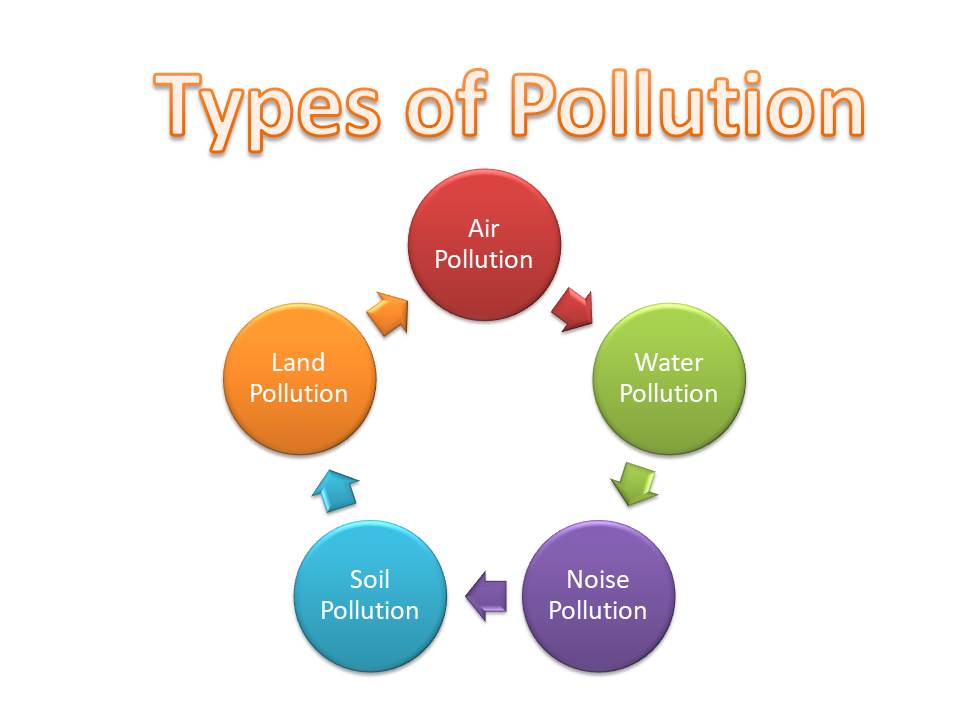
As mentioned earlier, pollution can be of various types, stemming from either natural occurrences like forest fires or human-made activities such as emissions from cars, industrial operations, and nuclear waste disposal. The primary classifications of pollution include:
1. Air Pollution
2. Water Pollution
3. Soil Pollution
4. Noise Pollution
In addition to these four main types, there are other forms of pollution, including light pollution, thermal pollution, and radioactive pollution. While radioactive pollution is less common than other types, it is considered the most hazardous.
Air Pollution
Air pollution pertains to the emission of harmful substances (such as chemicals, toxic gases, particulates, biological molecules, etc.) into the Earth’s atmosphere. These pollutants can have severe adverse effects, including significant health concerns.
Water Pollution
Water pollution arises when toxic pollutants and particulate matter are introduced into water bodies, such as lakes, rivers, and seas.
These contaminants are often a result of human activities, such as improper sewage treatment and oil spills. However, even natural processes like eutrophication can contribute to water pollution.
Soil Pollution
Soil pollution, also known as soil contamination, signifies the deterioration of land caused by the presence of chemicals or other man-made substances in the soil. These xenobiotic substances disrupt the natural soil composition and have adverse effects on it. Consequently, this pollution can significantly impact life both directly and indirectly.
For instance, any toxic chemicals present in the soil can be absorbed by plants, which, being primary producers in the environment, transfer these contaminants up the food chain. Although the effects of soil pollution may be less apparent compared to other types of pollution, their implications are highly noticeable and can have far-reaching consequences.
Noise Pollution
Noise pollution denotes the presence of an excessive amount of disruptive noise in the environment that disturbs its natural balance. Typically, it is caused by human activities, but certain natural events like volcanic eruptions can also contribute to noise pollution.
Sounds exceeding 85 decibels are generally considered harmful. Moreover, the duration of exposure to such noise can also have an impact on an individual’s health. To put it into perspective, a normal conversation registers around 60 decibels, while a jet taking off can reach approximately 150 decibels. As a result, noise pollution is more conspicuous than other types of pollution.
Ozone Layer Depletion
The ozone layer acts as a shield, safeguarding the Earth from the sun’s harmful ultraviolet (UV) radiation. However, when CFCs (chlorofluorocarbons) are released into the atmosphere, they undergo chemical reactions with ozone molecules, leading to the depletion of this protective layer.
Garbage Management
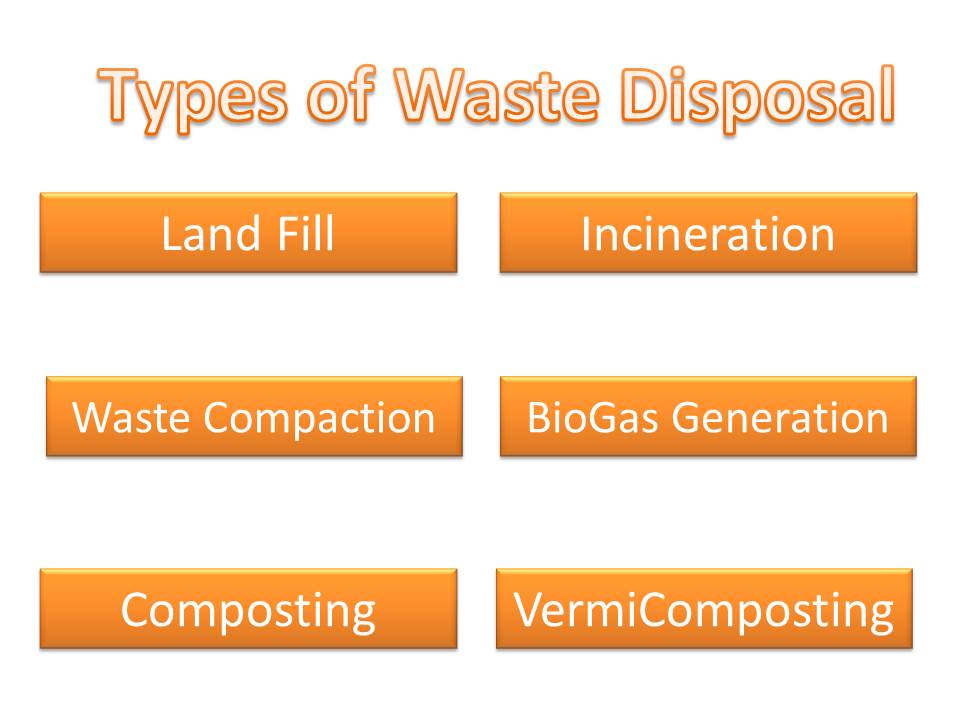
Waste management encompasses a series of activities and measures aimed at handling waste from its creation to its ultimate disposal.
It ensures adherence to environmental best practices through rigorous monitoring and regulation.
The steps involved in waste management are as follows:
1. Waste Segregation
2. Collection
3. Transportation
4. Treatment
5. Processing & Recycling
6. Disposal
Biodegradable Waste
Waste originates from plants or animals and can naturally decompose in the soil due to various natural agents such as weather, water, air, heat, microorganisms, and more.
Biodegradation
The process of decomposing garbage or waste materials through the activities of living organisms or biological processes.
Read More
- Class 10 Notes for Science NCERT
- Chemical Reaction and Equation Notes Class 10 NCERT Sci. Ch.1
- Acids Bases and Salts Class 10 Notes of NCERT Science Ch. 2
- Life Process Notes Class 10 NCERT Science Chapter 5
- Control and Coordination Notes Class 10: NCERT Science Ch. 6
- Class 10th How Do Organisms Reproduce Notes: Science Ch. 7
- Class 10th Heredity and Evolution Notes: NCERT Science Ch. 8
- Human Eye and the Colourful World Notes Chapter 10 Science
- Class 10th Chapter 11 Science Notes for NCERT Students
- Notes on Magnetic Effect of Electric Current Class 10 NCERT
- Metals and Non Metals Class 10 NCERT Science Chapter 3 Notes
Frequently Asked Questions on Notes of Our Environment Class 10
Q 1: What are the four types of environment?
The four types of environment are the natural environment (consisting of all living and non-living elements in nature), the built environment (human-made structures and infrastructures), the social environment (interactions and relationships between individuals and groups), and the cultural environment (beliefs, values, customs, and traditions).
Q 2: How can we reduce biomagnification?
Biomagnification can be reduced by controlling the use and release of harmful substances into the environment, particularly those that are persistent and non-biodegradable. Implementing proper waste management, recycling, and using eco-friendly products can help minimize the accumulation of pollutants in the food chain, thereby reducing the potential for biomagnification.
Q 3: What is biological magnification Class 10 notes?
In Class 10 notes, biological magnification, also known as biomagnification, is described as a process in which certain harmful substances like pesticides or heavy metals become increasingly concentrated in living organisms as they move up the food chain. The notes emphasize the importance of understanding this phenomenon and its consequences on the environment and human health, highlighting the need for pollution control measures.
Q 4: What are the main points of our environment Class 10?
The main points covered in Class 10 regarding our environment include the significance of preserving natural resources, understanding ecological balance, identifying various types of pollution. The concept of biodiversity, and the need for sustainable practices. Students also learn about the impact of human activities on the environment. Also, how individual actions can contribute to conservation efforts for a healthier planet.